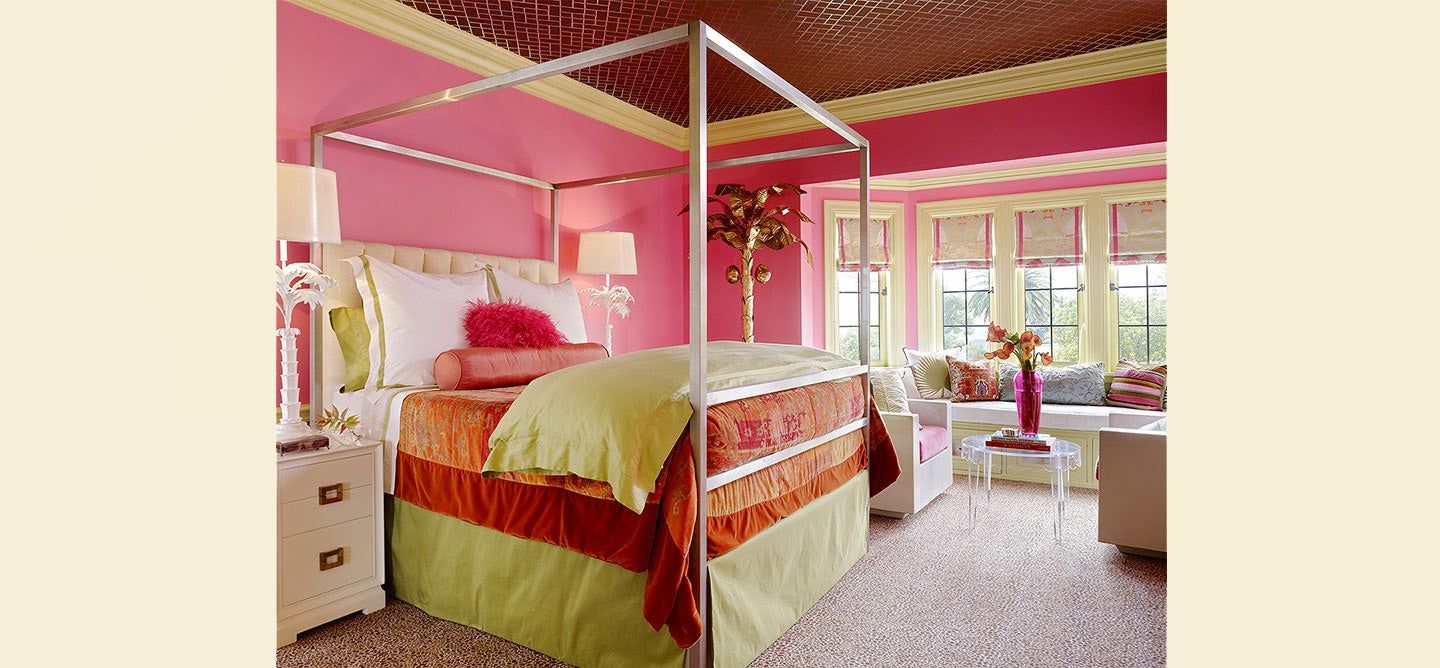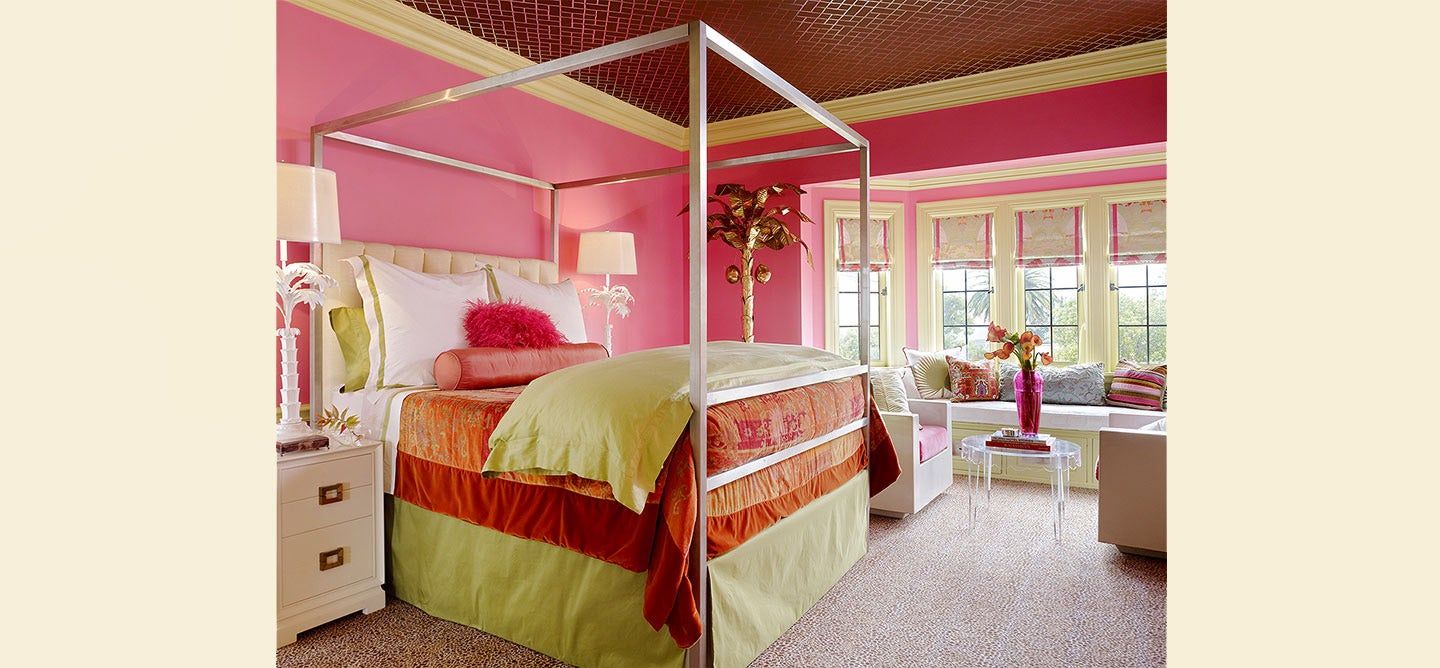
Fulk Files
The Secrets to Furnishing Kids’ Rooms
Striking the perfect balance between playful and chic is tougher than it looks, so we asked our favorite San Francisco-based interior designer to share how he pulls it off.
- Written By
- Ken Fulk
Décor should never be a bore. Or as the great American architect Daniel Burnham put it, "Make no little plans." But be sure to remember that furniture has some very practical jobs to do. Babies need to be changed. Exhausted parents need a comfortable chair they can collapse in. Toys need to be stored. So, I’m a great believer in starting with some big, fantastic ideas. There is no shaming when brainstorming. There’s plenty of time later to deal with reality.
Start with a mood board.
I start almost every project with an inspiration board, culling my favorite moments from film, television or photography. With no expected parameters, I might select images of an 80s sit-com set design, a screenshot of a new fashion ad, a vintage teacup or a glorious Miami sunset. From this simple exercise, I can easily hone in on a color palette or thematic concept that feels right by identifying the common visual threads.
As the vision begins to take shape, drill down into the particulars but stay within the fantasy for as long as possible, simply because it’s fun. Imagine voluminous canopy beds, built-in bunks, elaborate playhouses, antique armoires, wallpaper with storybook illustrations and high-concept toy storage. When you’re ready to face reality, take another look with an eye toward functionality, safety and budget.
Start with a mood board.
I start almost every project with an inspiration board, culling my favorite moments from film, television or photography. With no expected parameters, I might select images of an 80s sit-com set design, a screenshot of a new fashion ad, a vintage teacup or a glorious Miami sunset. From this simple exercise, I can easily hone in on a color palette or thematic concept that feels right by identifying the common visual threads.
As the vision begins to take shape, drill down into the particulars but stay within the fantasy for as long as possible, simply because it’s fun. Imagine voluminous canopy beds, built-in bunks, elaborate playhouses, antique armoires, wallpaper with storybook illustrations and high-concept toy storage. When you’re ready to face reality, take another look with an eye toward functionality, safety and budget.


Check your vision against how the room will be used.
The first reality check is relatively straightforward and painless. For a child’s room to function well, there should be dedicated spaces for sleeping, dressing and playing, and for grown-ups to sit comfortably during nighttime feedings and bedtime stories. When it comes to storage, more is more, so you’ll want to maximize every closet, cubby and bookshelf. Finally, don’t forget to leave enough room for kids to be kids, i.e., crawling, rolling, dancing, hiding, climbing and potentially, cartwheeling.
Next, you’ll want to consider the latest safety recommendations. As a designer, I’ll admit that this is not my specialty, but there’s no shortage of specialists to consult: official lists from pediatric experts, consumer watchdogs, one million bloggers and of course, the unsolicited advice of friends, neighbors and your in-laws. Resign yourself to the fact that safety is rarely stylish, and nix some of the more scintillating elements on the inspiration board, such as the striped silk canopy and matching crib bumper, the Chihuly-inspired glass mobile and the brutalist bronze commode as a changing table.
Use color, pattern and texture to keep your dream alive.
If it doesn’t feel like much of what you loved survived the safety litmus test, lean on colors, patterns and textures to tell a story in a room that will likely be updated every five years or so. We often do custom wall murals for our clients. These can be painted, wallpapered or temporarily stuck on and added to over time. Think of it this way: Start with a serene painted background wall for a nursery, add layers of forest scenery and animals after a couple of years, and embellish that with more detailed characters for bigger kids. If paint or wallpaper feels too permanent, rely on patterned bedding, rugs and drapery to add the characters of your tale.
The first reality check is relatively straightforward and painless. For a child’s room to function well, there should be dedicated spaces for sleeping, dressing and playing, and for grown-ups to sit comfortably during nighttime feedings and bedtime stories. When it comes to storage, more is more, so you’ll want to maximize every closet, cubby and bookshelf. Finally, don’t forget to leave enough room for kids to be kids, i.e., crawling, rolling, dancing, hiding, climbing and potentially, cartwheeling.
Next, you’ll want to consider the latest safety recommendations. As a designer, I’ll admit that this is not my specialty, but there’s no shortage of specialists to consult: official lists from pediatric experts, consumer watchdogs, one million bloggers and of course, the unsolicited advice of friends, neighbors and your in-laws. Resign yourself to the fact that safety is rarely stylish, and nix some of the more scintillating elements on the inspiration board, such as the striped silk canopy and matching crib bumper, the Chihuly-inspired glass mobile and the brutalist bronze commode as a changing table.
Use color, pattern and texture to keep your dream alive.
If it doesn’t feel like much of what you loved survived the safety litmus test, lean on colors, patterns and textures to tell a story in a room that will likely be updated every five years or so. We often do custom wall murals for our clients. These can be painted, wallpapered or temporarily stuck on and added to over time. Think of it this way: Start with a serene painted background wall for a nursery, add layers of forest scenery and animals after a couple of years, and embellish that with more detailed characters for bigger kids. If paint or wallpaper feels too permanent, rely on patterned bedding, rugs and drapery to add the characters of your tale.


Know what to splurge on and what to scrimp on.
Unlike other rooms, a nursery or playroom isn’t meant to be timeless, and baby furniture is rarely considered an investment piece. Babies only stay babies for a couple of years, and then they become amazingly fickle creatures, whose tastes and interests change with the seasons. You’ll want versatile furnishings and a nimble mindset. Even a crib that transforms into a highly sophisticated toddler bed will be outgrown within five years. When it’s time to choose big-kid furniture — a bed, desk and dresser — select the highest-quality craftsmanship and the most durable finish for the best chance against stickers, markers and karate chops. Additionally, a big kid room should grow with your child but also be accessible right away, meaning she can crawl in and out of bed on her own or that the highest drawer is within reach.
Once you’ve gotten all the practicalities out of the way, you can return to the inspiration board for creative direction. The sherbet hues of the Miami sunset might inform the colors of a washable rug, while the scenic pattern on the vintage china could inspire the wallpaper, and the post-modern 80s set design could lead you to the organic form of a velvet rocker. Your vision is realized — and it’s babyproof.
Ken Fulk is a San Francisco-based interior designer. His most recent public projects include the #saintjosephsartsociety. To learn more about his work, check out kenfulk.com.
Unlike other rooms, a nursery or playroom isn’t meant to be timeless, and baby furniture is rarely considered an investment piece. Babies only stay babies for a couple of years, and then they become amazingly fickle creatures, whose tastes and interests change with the seasons. You’ll want versatile furnishings and a nimble mindset. Even a crib that transforms into a highly sophisticated toddler bed will be outgrown within five years. When it’s time to choose big-kid furniture — a bed, desk and dresser — select the highest-quality craftsmanship and the most durable finish for the best chance against stickers, markers and karate chops. Additionally, a big kid room should grow with your child but also be accessible right away, meaning she can crawl in and out of bed on her own or that the highest drawer is within reach.
Once you’ve gotten all the practicalities out of the way, you can return to the inspiration board for creative direction. The sherbet hues of the Miami sunset might inform the colors of a washable rug, while the scenic pattern on the vintage china could inspire the wallpaper, and the post-modern 80s set design could lead you to the organic form of a velvet rocker. Your vision is realized — and it’s babyproof.
Ken Fulk is a San Francisco-based interior designer. His most recent public projects include the #saintjosephsartsociety. To learn more about his work, check out kenfulk.com.
Ken's Picks